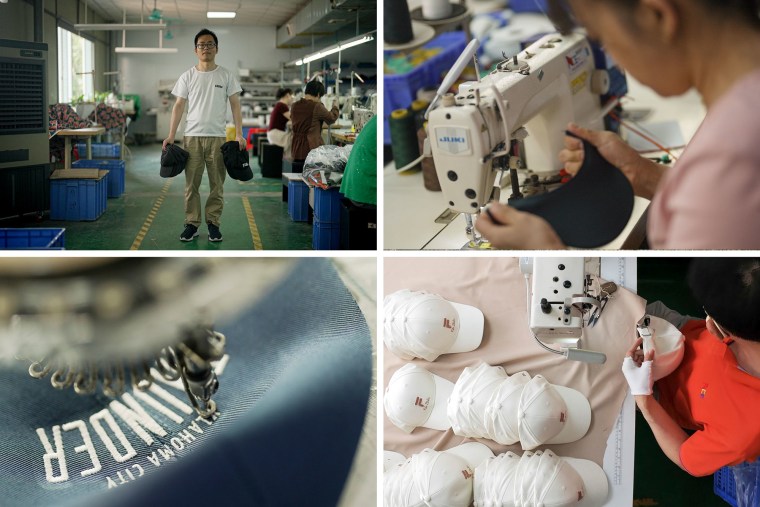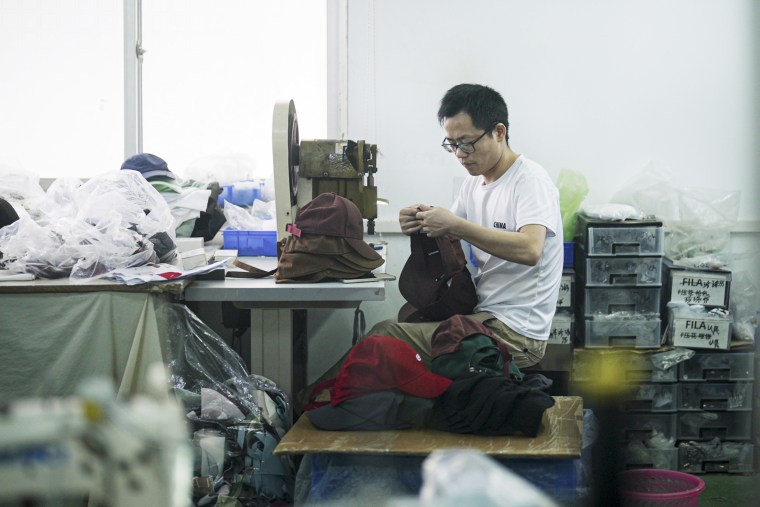GUANGZHOU, China — At his factory in southern China, hat supplier Jeffy Ma is trying to keep up with global demand as well as President Donald Trump’s seismic changes to international trade.
Trump announced on Wednesday a new round of 34% “reciprocal” tariffs on Chinese goods, part of tariffs he imposed on countries around the world over what he says are unequal trade relationships with the United States. China responded on Friday by imposing the same levy of 34% on U.S. imports, escalating the trade war between the world’s two biggest economies.
With the combined U.S. tariff on most Chinese imports now at least 54%, the cost of many everyday goods produced in China — from hats to auto parts to electronics — is set to rise.

While Trump has promised the cost of the new tariffs will be borne by countries such as China, Ma says it is American consumers who will mainly pay the difference in the form of higher prices. His company, Ace Headwear, sews, embroiders and finishes golf visors, cycling headwear and baseball hats for brands such as Wilson and Fila, as well as for Major League Baseball teams. About 40% of the hats his 350 employees make are sold to the United States.
“For us, the manufacturing profit is very low, so we cannot absorb so much,” Ma told NBC News last week at his factory in the southern Chinese manufacturing hub of Guangzhou. “I think the final result is that the consumer in U.S.A., they will pay.”

The 34% tariffs come on top of earlier tariffs of 10% each that Trump imposed on Chinese goods in February and March. China had announced retaliatory tariffs in response to those as well.“It’s a mess,” Ma said of the tariffs. “It’s a challenge to all of us.”As the cost of doing business with the U.S. increases, Ma is looking to sell more to China and other markets.
He has also considered building new factories in Southeast Asia, where China has shifted some production in an effort to avoid U.S. tariffs. That may be less appealing, however, now that Trump has slapped tariffs as high as 49% on countries such as Vietnam, Thailand and Cambodia, keeping China relatively cost-effective as a manufacturing base.

Even before Trump’s latest tariff announcement, Ma said, relocating to Southeast Asia was far from a perfect solution, given China’s role as the world’s largest manufacturing powerhouse with a skilled labor force and efficient supply chains.Nor is it realistic for factories like his to move to the U.S., he said, due to the country’s lack of skilled sewing workers, which he said can be difficult to find even in China.
Most of the workers at his company, which was founded in 2014, have a decade or more of experience, Ma said, “so their efficiency is higher.”
Countries such as Vietnam are trying to persuade Trump to roll back his tariffs, and China may also be willing to negotiate, said Tianchen Xu, senior China economist at the Economist Intelligence Unit, a financial forecasting service.

“But I would say that things are not looking very good,” Xu, who is based in Beijing, told NBC News in an interview Thursday.Ma remains optimistic about the future of trade between the U.S. and China. “I think two countries will find a solution,” he said. “China is still the manufacturing center of the world.”
“For us, we want the two countries to be friends, not enemies,” he said.
Janis Mackey Frayer reported from Guangzhou, and Peter Guo reported from Hong Kong.

